Even though we haven’t had a wonderfully hot, sunny summer, we certainly have had plenty of butterflies and other insects flying around the garden and adding extra colour. Early in the spring we had plenty of Orange Tips but they are so fast and never seem to settle for very long, so I was unable to manage to take any photos of these or the Brimstones which visited later. Was more successful with the Small Tortoiseshells which are visiting now.
Also lots of Peacocks, so beautiful.
Silver Washed Fritillaries enjoy the brambles in the woodland and then come into the garden for an extra dash of nectar. I have only recently discovered that these butterflies like to lay their eggs on the wild violet, we have masses of violets in the woodland and spreading into the garden, have to keep them under control, nice to know they are needed by our butterflies.
Holly Blue butterflies are only tiny compared to the others but are always seen as we have plenty of holly bushes and far too much ivy, they need both at different times of the year to lay their eggs on. Spring larvae feed on the flower buds of Holly, autumn ones feed on the Ivy buds. Something has eaten most of the leaves on my variegated holly, was it the caterpillars of the Holly Blue and if so , why, please couldn’t it choose the wild hollies at the edges of the garden ?
Another butterfly that lives in woodland and doesn’t fly very far is the Comma, so called because of the small silver mark on the underside of the wing. Like the Silver Washed Fritillary, we only see the Comma in the part of the garden near to our woodland. The larvae like to feed on nettles (next door in the field ) and hop, we grow a golden hop over an arbour, do you think they mind what colour it is ?
The Speckled Wood gives away its habitat by it’s name, it’s speckled and it lives in woodland, but comes into the sunny part of the garden for a nectar fix. This time I found it having a rest on the gravel in the alpine scree. We often see the males fighting for a patch of sunlight in the woodland, they fly in circles over and over each other until one gives way exhausted.
Usually found by field gates because that is where brambles usually grow, the Gatekeeper has learnt to explore gardens to find more food, this is a common visitor here.
I found this Red Admiral yesterday, I think just out of it’s chrysalis, because it looks so pristine and the colours are so fresh, not in the least bit faded, it was so beautiful. I don’t feel the need to grow nettles for the Red Admirals , Tortoiseshells or Peacocks to lay their eggs, there are plenty in the field next door !
I always seem to find the Ringlet on the Eupatorium purpureum, must be a favourite food for the butterfly stage, the larvae just feeds on grass, maybe the long grass from when we have our meadow in early summer. We saw 3 Ringlets circling over and over each other just a foot above the meadow, were they, like the Speckled Woods, laying claim to their part of the meadow, to lay their eggs maybe?
I know, not a butterfly, but we have had so many Ladybirds in the garden this summer, they are everywhere, every plant I look at seems to have it’s own beetle hiding somewhere.
Also, we have had more crickets than usual, they even come and land on us if we stand still long enough!
I think all this activity in the garden means that I must be doing something right, I have noticed a difference in the numbers of butterflies that we have in the garden since I have been providing the plants that the butterflies need to lay their eggs. I found out that the Orange Tip butterfly likes to lay its eggs on Cardamine pratensis, cuckoo flower, so off I went and planted some. I think a few plants with half eaten leaves is a price worth paying to have these lovely insects sharing the garden with us, do you agree ?

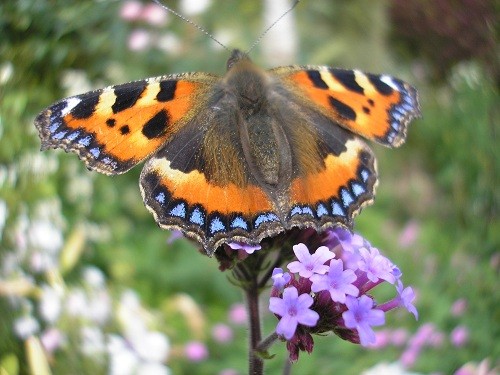

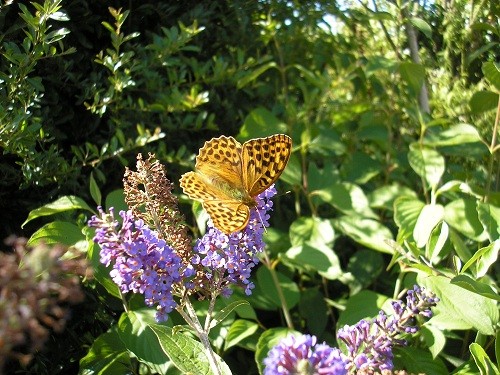
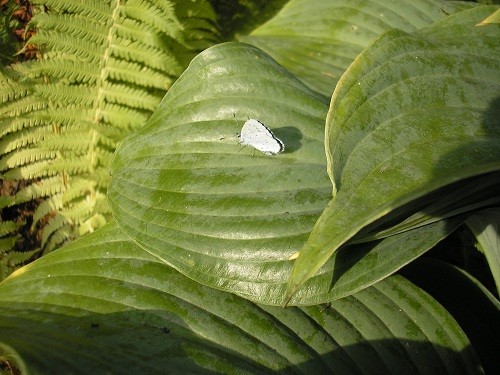

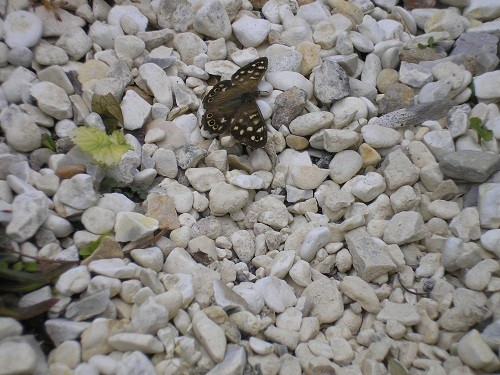
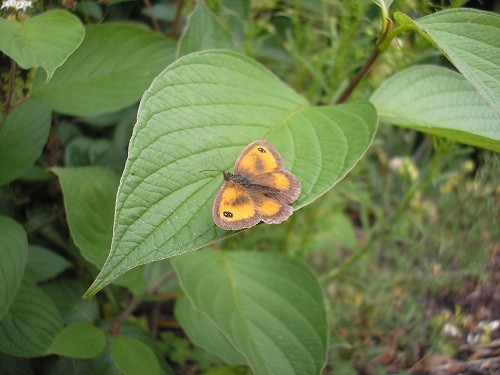

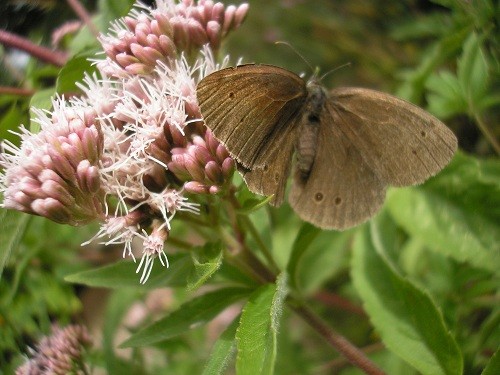
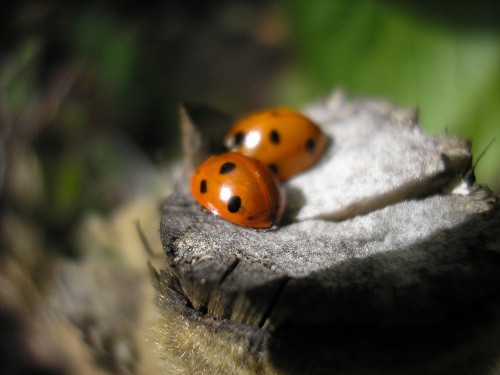

definately agree Pauline, what a wonderful array of winged creatures, so rewarding for you, there are not many butterflies this far north and no ladybirds at all things I didn’t know until I moved here, infact something I never even considered before moving here, I see lots of bumblebees and other winged creatures I know not what they are, cuckoo flower/lady’s smock grows wild here I have a little in my garden I am encouraging more, Frances
I think we have such a variety Frances, thanks to our small strip of woodland and we never saw the Ringlet before leaving our grass long for a tiny meadow for a few months. I think it’s all down to habitat for all stages of development. I’ve looked up Orange Tip and it is found all over Europe, so ,you never know, one day they might pop over to lay their eggs on all your ladies smock !!
Have spent a very enjoyable half hour catching up with your wonderful blog Pauline Your knowledge of flora and forna fills me with admiration, to say nothing of your wonderful photography. The plants are just magical. You know how much I love gardening too, but could never reach such perfection as you have achieved. Congratulations!!. Would be pleased to give you a nice big clump of Rudbecia when it has finished flowering. See you soon . Jean
Thanks for your lovely comments Jean, but it is your garden that is perfection. Would love your Rudbeckia, have just the place for it, it can be the gold at the end of my rainbow !
Yes, you must be doing someting right to have such a good selection of different species. Your images are wonderful, it needs so much patience to get them in focus. We’ve had far fewer butterflies this year, I think it is because the winter was so cold last year. Christina
I just have a point and press camera with a built in macro lens Christina, but quite often they have flown away by the time I press the button, lots of patience needed ! I think the bad winter last year was responsible for the lack of a lot of our beneficial insects unfortunately, but thank goodness enough survived.
I’ll say you are doing lots of things right to have so many beneficial insects in your garden. The closeups of the butterflies are amazing. In the first photo I wanted to stroke its hairy tummy! (or whatever you call that part of its anatomy)
Had to laugh Catmint, at the thought of you stroking a butterfly’s tummy or even its back ! Usually only notice the creepy crawlies when photographing the flowers, then its amazing what you find hidden between the leaves and stalks.